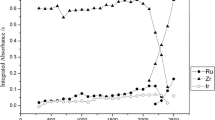Abstract
The aluminium (Al) concentration in different brands of beers packaged in Al cans and glass bottles was measured at the end of the shelf-life of the beer, by the Zeeman graphite furnace atomic absorption spectrophotometry (ZGFAAS) method. The results show that in all cases a brand of beer packaged in an Al can has a higher Al content than the same brand bottled in glass. The measurements of the Al concentration in some Al-canned beers throughout 12 months of storage show that a relatively small increase of the Al concentration in beers occurs throughout storage. All these results indicate that some Al is taken up by the beer in Al cans, presumably through the slight and slow dissolution of Al from the can wall, due to some defects in the protective lacquer layer. The evaluated daily intake of Al (0.256 mg) possible through the consumption of beer was practically negligible in relation to both the total daily dietary Al intake and the tolerable daily Al intake. Thus, beers are an insignificant source of dietary Al intake and it appears that the Al intake from beers (due to the low content of Al in beers and its low bioavailability) should not be a cause for concern with regard to Al toxicity for the human body.
Similar content being viewed by others
Author information
Authors and Affiliations
Additional information
Received: 22 April 1996
Rights and permissions
About this article
Cite this article
S˘eruga, M., Grgić, J., Grgić, Z. et al. Aluminium content of beers. Z Lebensm Unters Forsch 204, 221–226 (1997). https://doi.org/10.1007/s002170050067
Issue Date:
DOI: https://doi.org/10.1007/s002170050067




